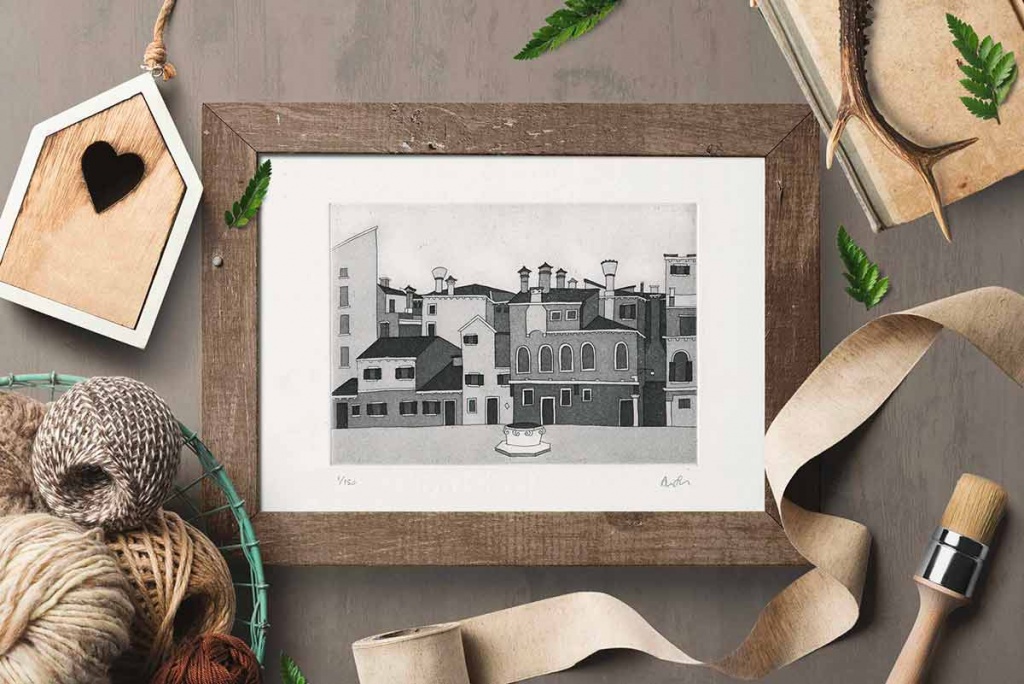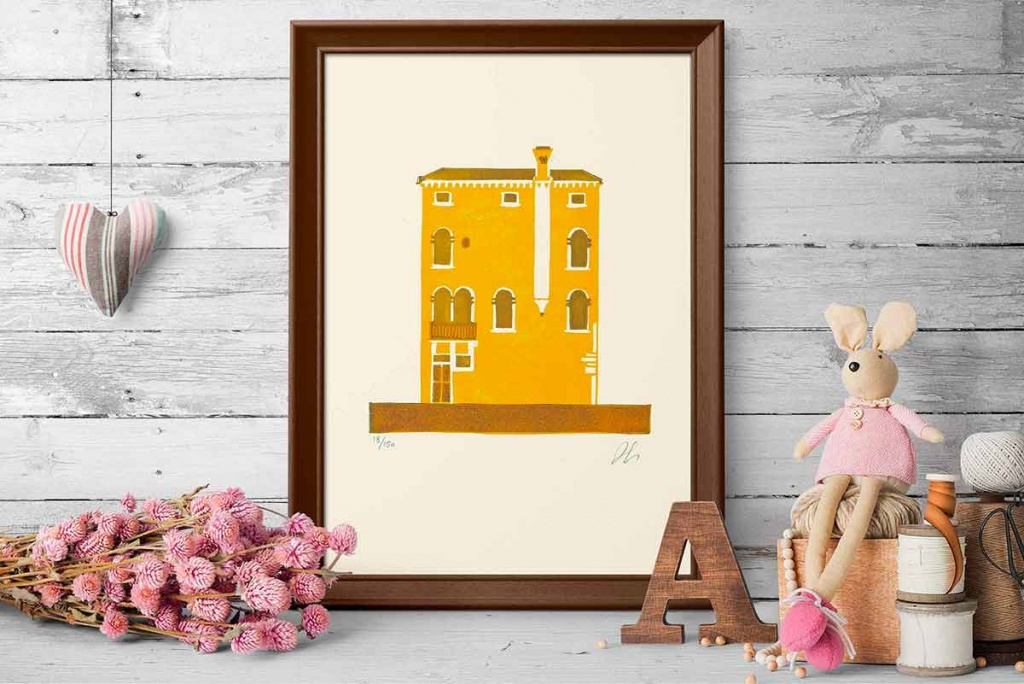The Art of printing was born in China during the Han Dynasty (a print on fabric can be dated 220 AD), although some artifacts have been discovered in Egypt dating from the sixth or seventh century BC.
The first type of printing was made pressing a small wooden carved board carved on fabric or paper, the Xilography (from the greek xilon = wood and graphos = handwriting), where it is eliminated the space that will remain white on the print and the printable portion of the matrix is what remains of the original thickness of the plate.
The oldest printed book is a Chinese translation of the “Diamond Sutra“, a Buddhist work, realized in 848 AD
In a memorial dating back to 1023 it is said that the Chinese government was using copper plates (intaglio) to print banknotes and official documents.
The technique of Xilography, together with Papermaking, is taught by the Chinese to the Arabs when they conquered Samarkand in 712, and spreads across European countries conquered by the Arabs.
In Europe, from the sixteenth century, the Xylography is commonly used to print fabrics, and from 1400 (when the paper becomes easily available) is used to print playing cards, to print religious images and texts of prayers, and for artistic productions.
Some xylographs could be used for a small number of images which were then bound together to form the first books, which were printed in European convents between 1380 and 1430, and included images and texts.
Printing entire books in this way was a long process because each page was made carving a wooden tablet, which often broke for its fragility.
The most ancient book that speaks about woodcuts with a printing purpose “Trattato della Pittura o del Libro dell’Arte” (The book of the Art) by Italian Cennino Cennini in 1437.
In 1041 in China Bi Sheng invented movable type printing using the clay, but it was too fragile. In 1298, still in China, Wang Zhen introduces a more durable type made of wood, while in Korea, in 1234 the mobile characters are created using metal bronze.
In Europe, Johannes Gutenberg invents the text printing using movable metal type made of iron and steel, the strongest materials known at the time. We can not be sure that Gutenberg did not come in contact with this technique thanks to the trade routes with the East, but surely he has perfected it through the invention of the printing press modeled on the winepress of the Rhenish farmers, and through the improvement of the printing ink, oil-based instead of water-based, and therefore longer lasting.
With the spread of movable type, the technique of xylography to print full pages falls into disuse, but a way to combine images xylographic with texts composed with movable type is soon found, loosing yet the previously continuity and interpenetration of the text with the pictures.
The search for the particular in illustrations pushes artists to experiment the metal engraving, Chalcography (from the greek chalcos = copper and graphos = handwriting), where the drawing is traced through the use of the burin digging the plate which is then inked and printed (unlike the xylography, worked in negative, where the print result is given by the digging of the wooden plate of what will result white, in chalcography -worked in positive- the result of printing is given by the signs made on the plate that will be the actual final drawing).
The origins of the chalcography are uncertain: it is expected to be born in Germany around 1430 with the use of the roller press which replaces the vertical one used for the xylography.
The engraver who has made the first known chalcographic prints works in Basel from 1430 to 1445.
Giorgio Vasari attributes to Maso from Finiguerra (1426-1464) the discovery of Chalcography, using the “niello” technique used by jewelers, who used to engrave a metal plate with the burin and then filled the cavity with a special alloy, called “nigellum” obtaining dark images on a metal smooth background. The goldsmith, before filling the grooves with the alloy, used to make a test of the work done by filling the signs of the burin with a mixture made up of lampblack and walnut oil (more or less the copperplate ink still used) and printing the plate on a piece of wet paper.
The Art of printing spreads quickly across Europe.
End of part 1









 Il Carnevale di Venezia
Il Carnevale di Venezia  Toponomastica Veneziana: Calle, Calle Larga, Salizada, Rio terà, Ramo, Sotoportego
Toponomastica Veneziana: Calle, Calle Larga, Salizada, Rio terà, Ramo, Sotoportego  La Fondamenta veneziana
La Fondamenta veneziana  Due anni e non sentirli: buon compleanno Plum Plum Creations!
Due anni e non sentirli: buon compleanno Plum Plum Creations!  Bicentenario delle Gallerie dell’Accademia – Canova, Hayez, Cicognara
Bicentenario delle Gallerie dell’Accademia – Canova, Hayez, Cicognara